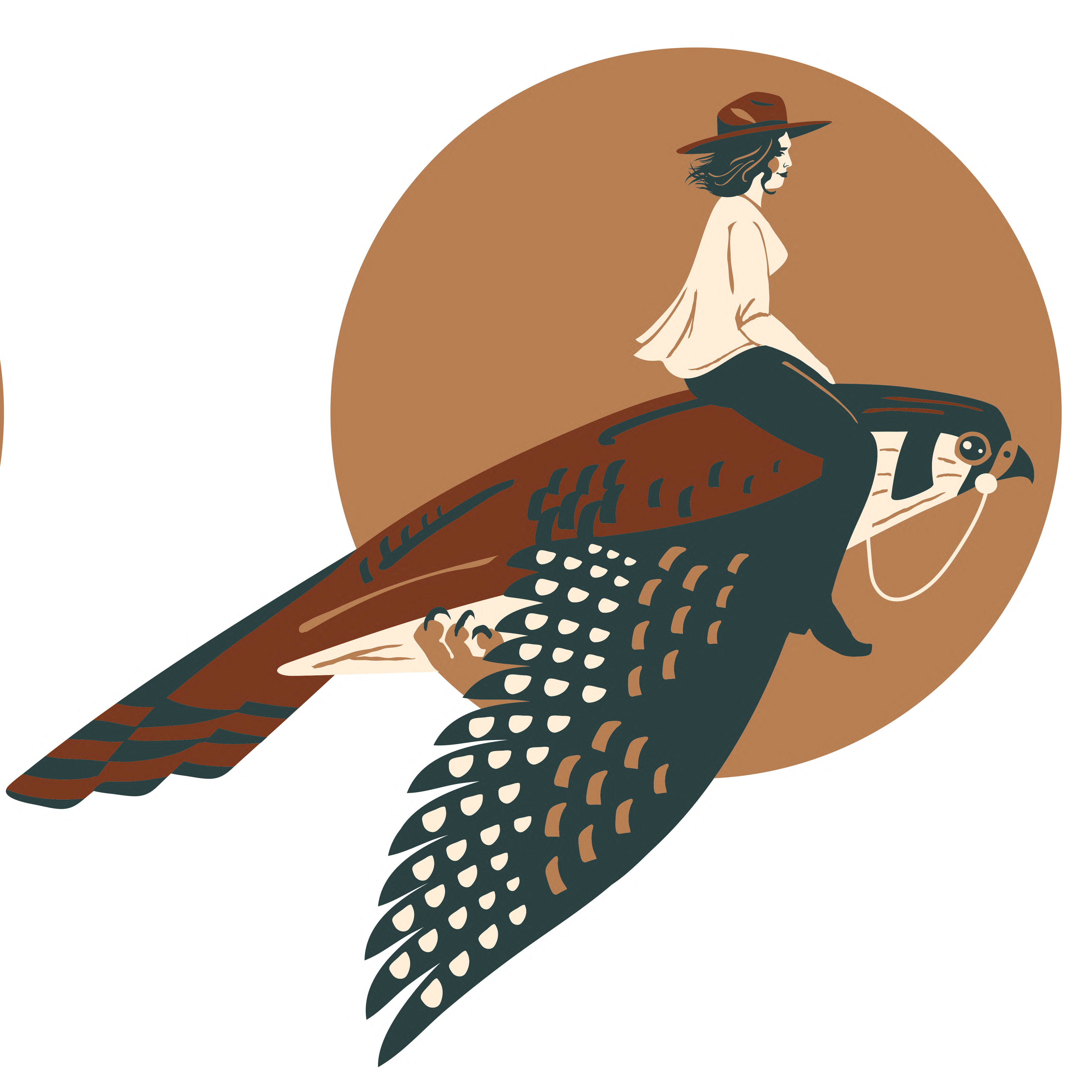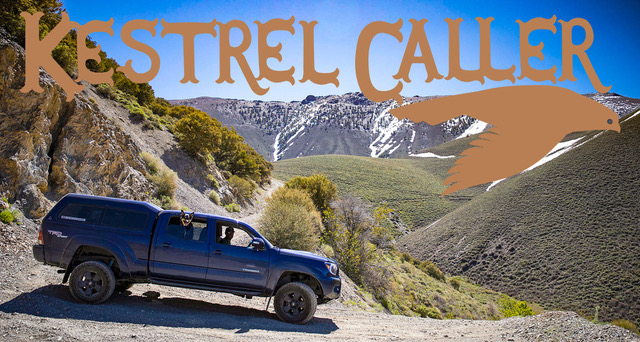Your Guide to the National Cowboy Poetry Gathering in Elko
Learning the Great Basin State’s every line is something I’ve turned myself inside out for, studying everything from its mighty basin and range topography, to its unrivaled wildness, and most honorably, the people. But something special happens when you find the bridge between the three—in my experience, you reliably can feel it, and find it in Elko.
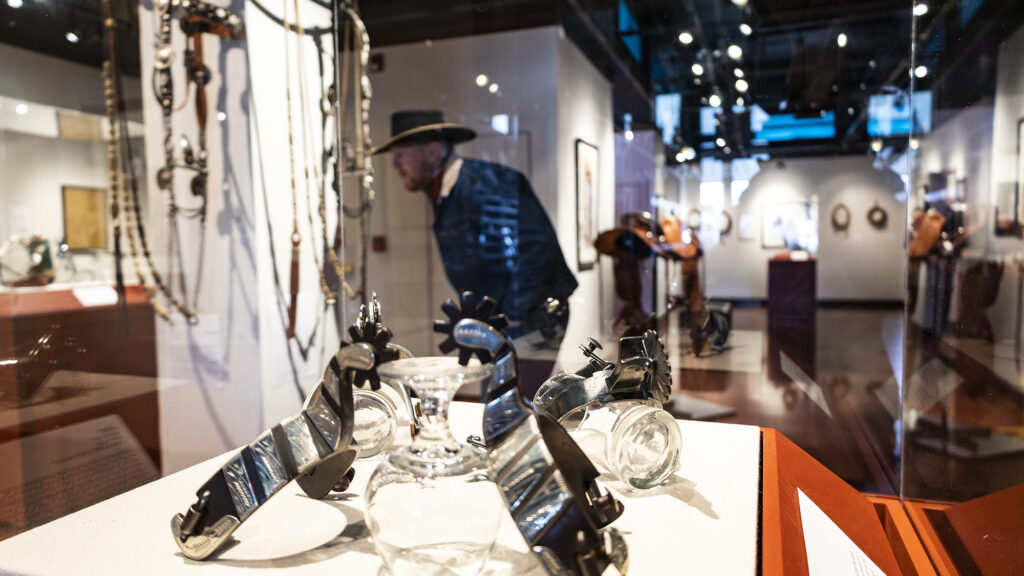
Turns out, the folks at True West Magazine knew what they were talking about when they declared Elko one of the last “True Western Towns in America” about a decade-or-so ago. Despite its modest population of 20 thousand-ish in Elko proper, the town anchors two of Nevada’s heartiest identities—the Basques and the Buckaroos. Even though mining has driven economical bounties and always been the main character in Elko (and Nevada) industry, it’s always been about the caretakers of the land in Elko. It’s only in northeastern Nevada where you’ll find the state’s most iconic Basque boardinghouses and the legendary stories of the people responsible for making one of Nevada’s most lasting legacies, along with the Cattle Kings who’ve looked after the land and everything on it far longer than most of the land management agencies have been around, combined. Today, Elko is home to one of the largest populations of Basques in America (third largest, I believe), and together with the Great Basin Buckaroo, proudly keeps Nevada’s Western pulse pounding on.
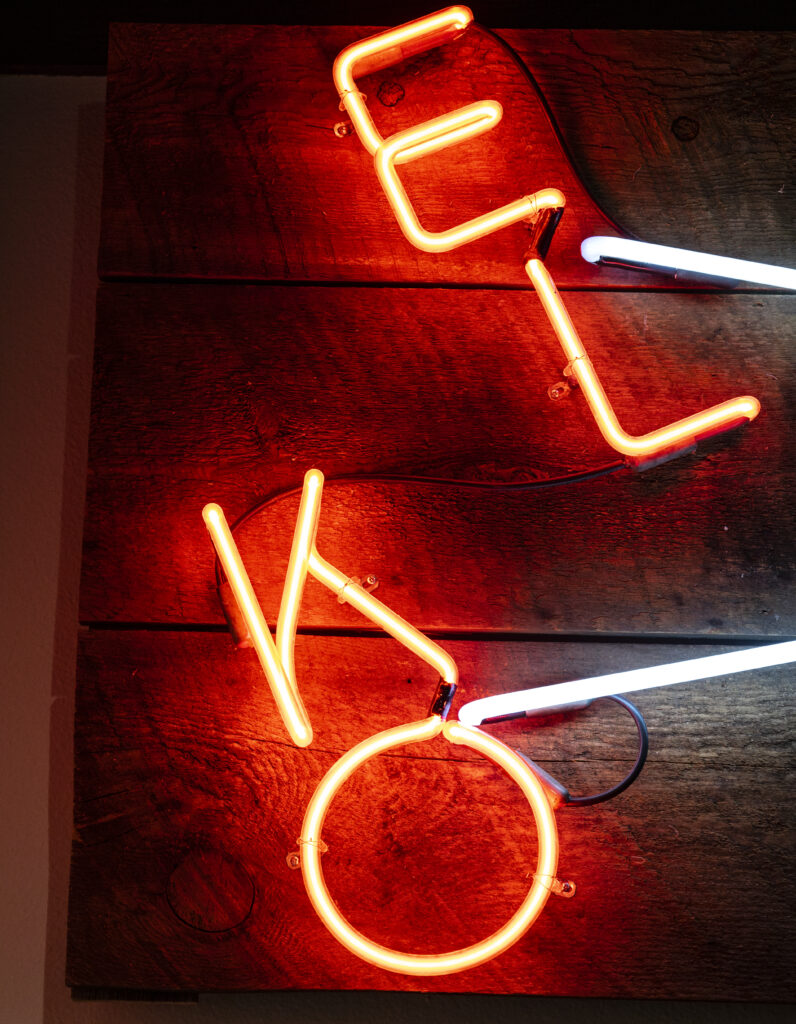
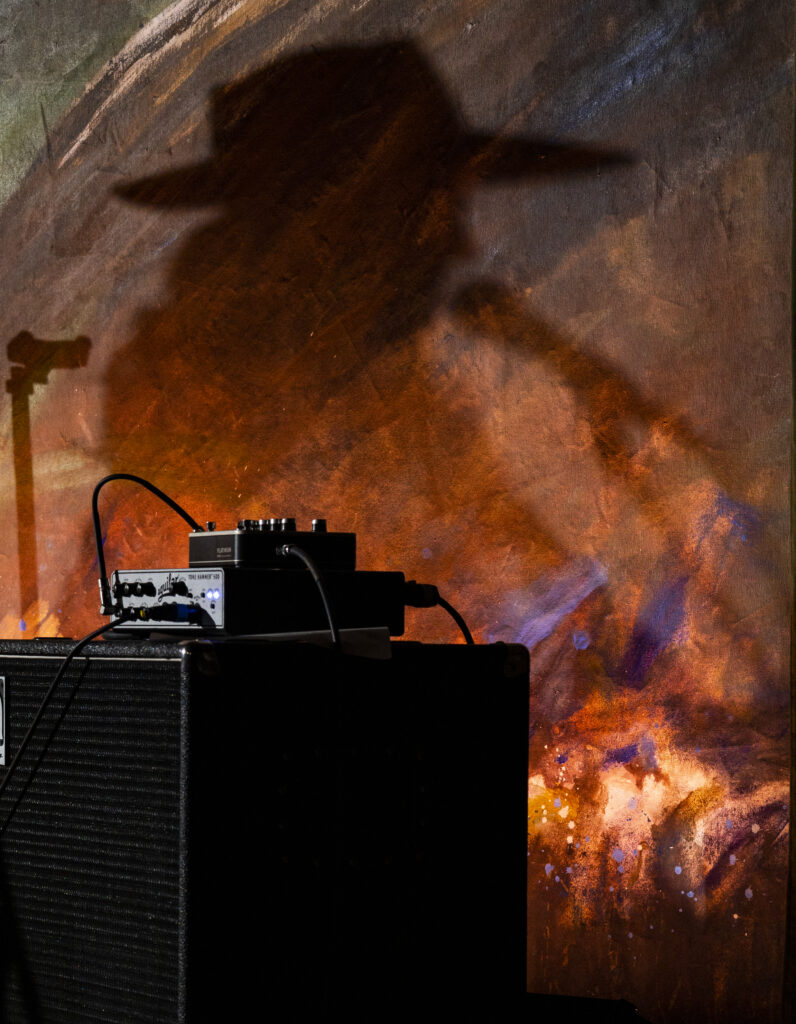
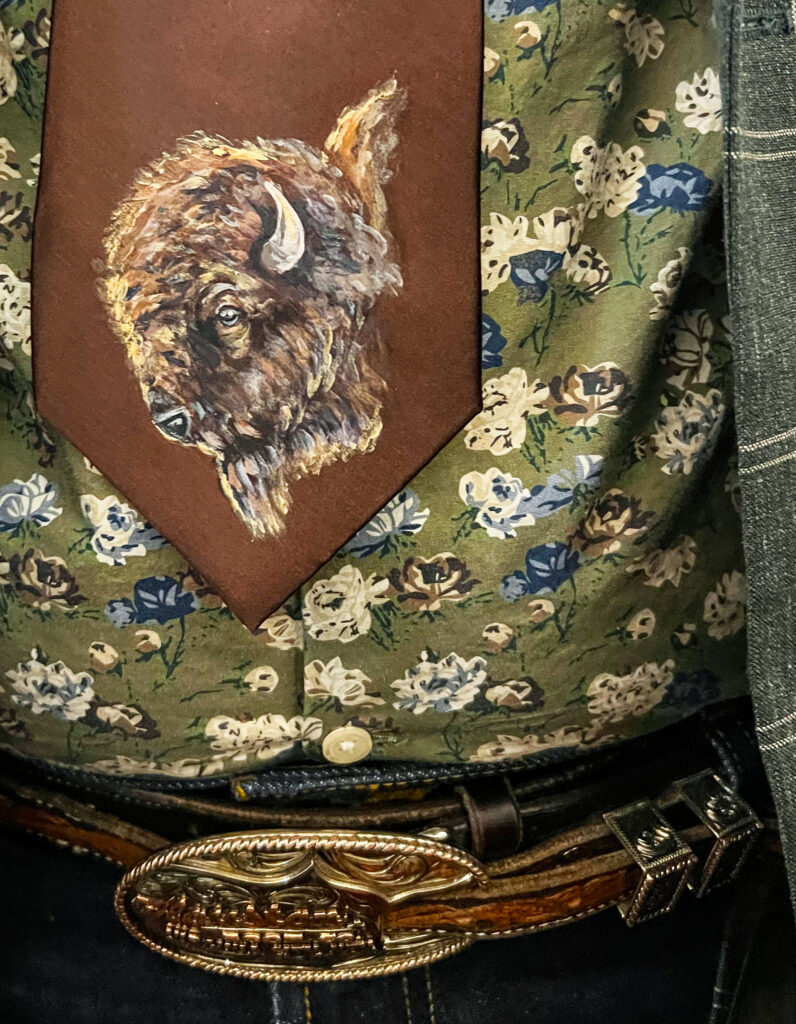
In a town where authenticity is turned all the way on with absolutely no dial, it’s easy to celebrate the cowboy in Elko, or in Nevada’s case, the Great Basin Buckaroo (a bastardization of the Spanish word Vaquero), all twelve months of the year. From The Star Hotel, to the Cowboy Arts and Gear Museum, J.M. Capriola Co. and beyond, you can feel its uncomplicated Western spirit all over town. But the place that gives a voice and bears the soul of the Great Basin Buckaroo is no place other than the Western Folklife Center—the HQ of the National Cowboy Poetry Gathering that happens in Elko each January.
It’s hard to explain the depth of a feeling, but I can assure you what’s happening at “The Gathering” is enough to fuel you up and stick with you throughout the year—a true tuning fork, as Hal Cannon once described it—and offers a sense of belonging unlike anywhere else. The thing is, it’s not simply another festival spectacle, but the coming together of true stewards of the sagebrush, poet laureates, jokesters and storytellers, musicians and makers, filmmakers and audiophiles, and regular people (me!) who are simply interested in being part of living, breathing tradition, all threaded together with one common story: the West. It’s a weekend of storytelling told by some of the West’s most voracious protectors—some hilarious, others sure to make you cry—a chance to feast your ears on legendary musical performances from nationally acclaimed and locally adored entertainers, and an all-out unpretentious way to celebrate some of the few things in the world that still remain truly free.
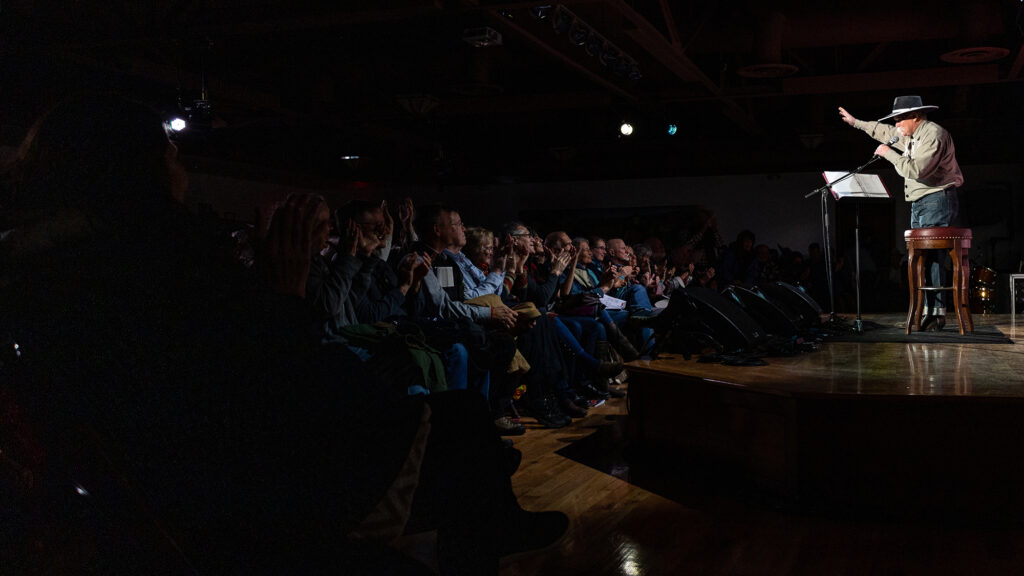
So, what is cowboy poetry?
…And While we’re at it, everything it surely isn’t.
With a calling to give voice to tradition, artistry, and cultural expression of the West—Canadian, American, and Mexican Western regions included—the Western Folklife Center (WFC) lies within historic downtown Elko, giving Nevada landmark the Pioneer Hotel a second lease on life after closing in 1981. The old Pioneer Saloon and Hotel is one of Elko’s first and oldest bars, originally opening as a mere tent in 1868. This Nevada icon became a stately saloon and hotel by 1913, reopening with tiled floors, a stamped metal ceiling, and stately mirror-backed bar, with the upper floors converted to hotel rooms that welcomed detraining passengers from across the country and world. By 1992 it became the Western Folklife Center, and as of this writing, the WFC is getting ready to kick off its 39th (!!) National Cowboy Poetry Gathering.
Thanks to thoughtful organization from a team of local and regional folklorists and Cowboy Poets like Waddie Mitchell and Hal Canon (to name a few), the very first Cowboy Poetry Gathering was held in Elko, Nevada in 1985 with the ethos of creating a gathering space for ranchers, cowboys, and rural Westerners to meet up and share stories about their lives, and hasn’t paused since. From the get-go, it was clear the event filled a long-yearned-for, dependably scheduled time and place to meet up, exchange stories about their work, challenges, sorrows, gut-busting antics on the range, and to rejoin a community not found any place else. With 40 “poets” (or live entertainers) and 1,000 attendees in that first year, it all simply worked, and instantly.
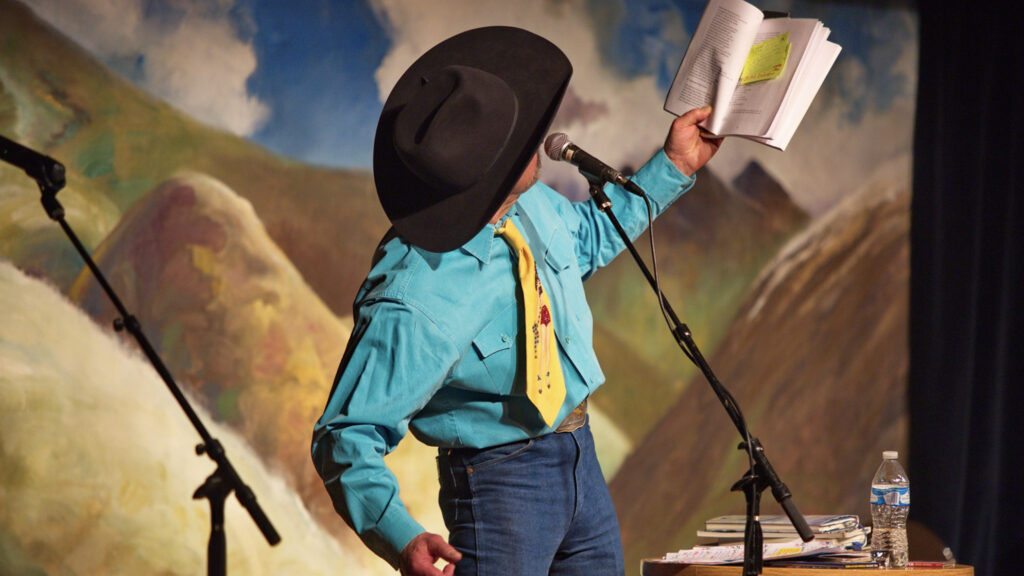
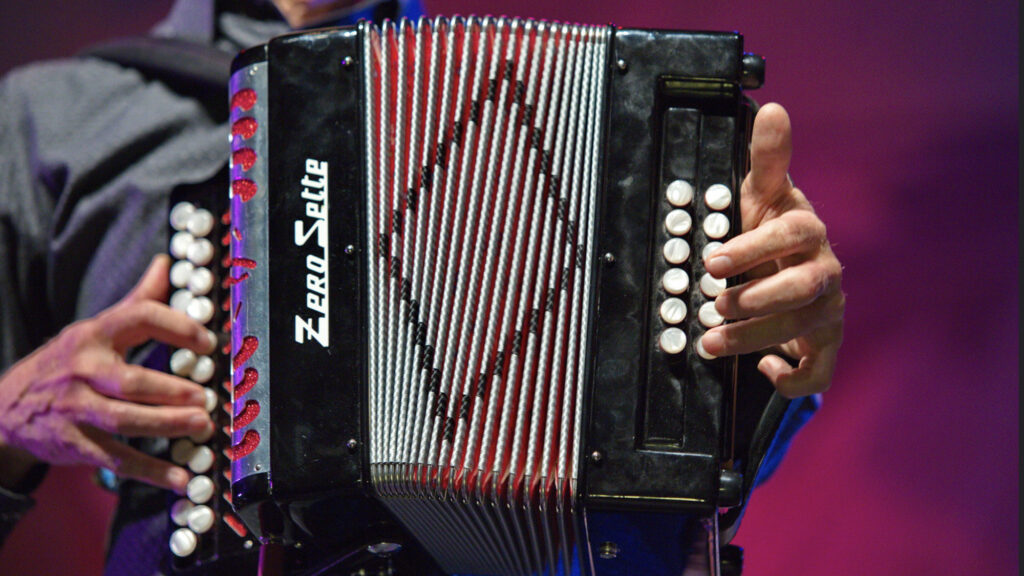
Even though there are plenty of other Cowboy Poetry events all over the West, the one in Elko has developed a galloping momentum in the nearly four decades since, each year casting a wider net regionally and generationally. And that’s the secret magic in it all—what began as an event for rural Westerners to meet with others who shared the same lifestyle has grown into an event where anyone can come and participate… Cowboy street cred not required. And while there are all kinds of other events where participation is also the heartbeat of the event, the National Cowboy Poetry Gathering has no exclusivity or pretentiousness, which is what makes going and being part of it all so fun. You don’t have to recast yourself as somebody else—anyone can go and instantly feel welcome and part of this very particular community. That folksy modesty also creates an atmosphere where you can expect to see Colter Wall sitting at The Star knocking back a Picon, or Scott Slusher next to you in the audience just like anybody else. No pretentiousness, no exclusivity—38 years later and everyone still finds the road to Elko to protect, preserve, and honor the cowboy lifestyle.
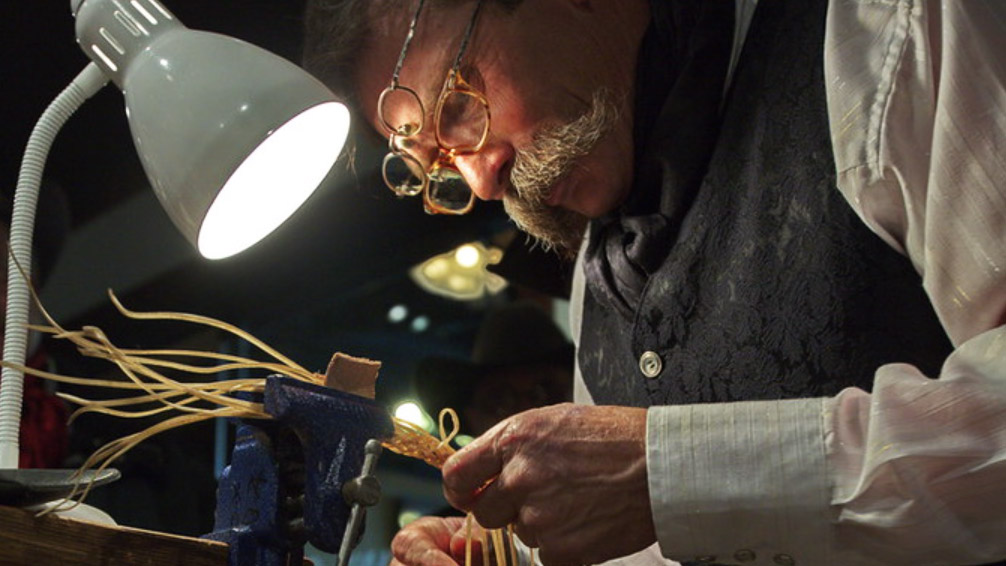
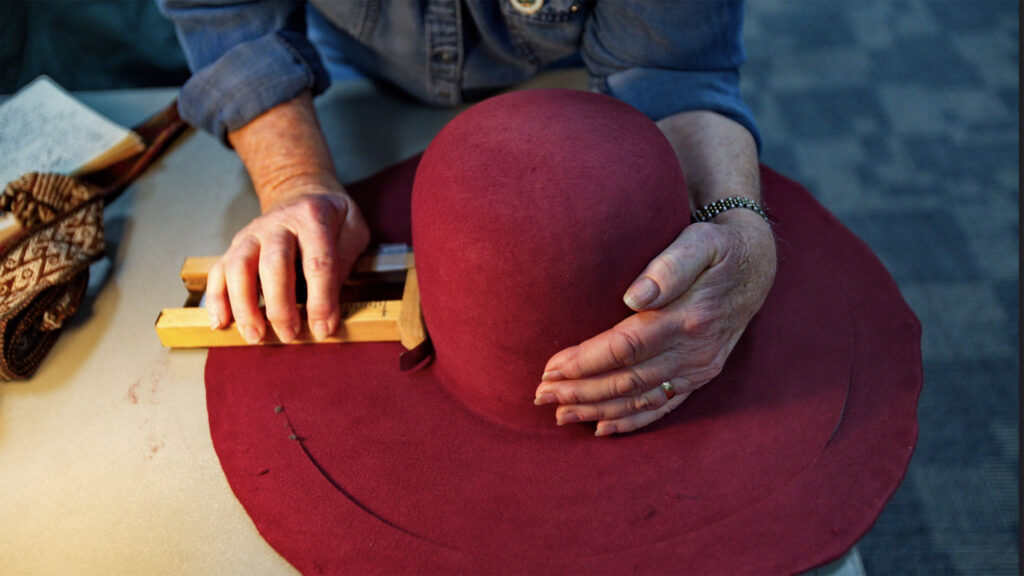
So, is it just cowboys reading poetry—just an old cowboy on an even older stool, reading poems on stage for a whole week? Despite the name, no, not at all. In fact, there are truly very few sessions in the week-long agenda that entail someone reading poetry, and if they are, it’s from one of their many nationally acclaimed, published books. Instead, you’ll find days of storytelling—most of them hilarious and more like a joke in a it’s-a-wild-adventure-getting-to-the-punchline sorta way: think cautionary stories of drinking downstream from a cow pie, tales of how much a person could love a horse or dog, and of course open range and other wild spaces—all kinds of workshops about rawhide braiding and other leather crafts, silversmithing, two-step dancing, dutch oven cooking, and more, lively music and nightly sold-out shows, unsuspectingly refined art galleries, Western merchants, delicious food, and some of the best conversations and human interactions you’ve had everywhere in between.
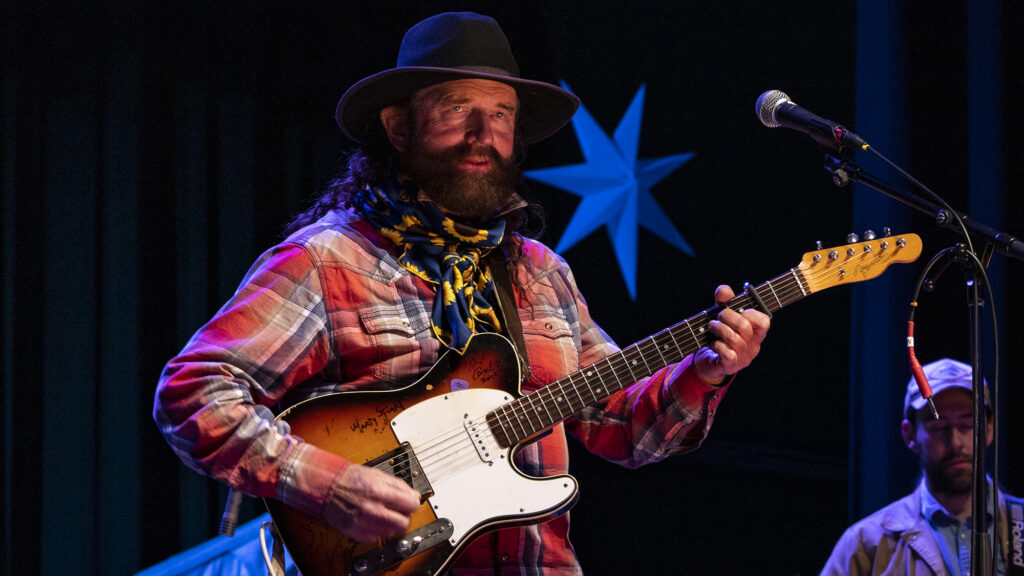
The Event: The Who’s Who, Don’t-Miss-‘Em Shows, Sessions and Workshops, and Schedule Specifics
While the common thread in each Gathering is to honor the ways of the rural West, each year is given an official theme, which slightly slants the workshops, performers, and other live sessions throughout the week. Past themes have included honoring the Vaquero of Baja Sur, Native Americans and the West, Western Basques, and the Black Cowboys role in American history, to name a few. Aside from workshops and sessions elevating the theme, the WFC also releases a wild rag (or silk scarf most cowboys wear) with that year’s official artwork, along with a highly collectable pin that, worn on your hat, camera strap, lapel or purse, is considered your ticketed entry to each event.
The Gathering typically kicks off the last Monday in January, and while the entire week offers all those Elko-and-only-in-Elko workshops and ways to authentically participate in Western traditions for any interest, ability, or age, the event officially begins on the Thursday of that week, earmarked by an extraordinary keynote speaker officially welcoming to the last true cow town in Nevada. And the lineup of past keynote speakers is no joke, including people like US Supreme Court Justice Sandra Day O’Connor, Don Edwards, Baxter Black, Ian Tyson, countless other decorated writers, philosophers, musicians, and of course Nevada’s most famous cowboy poet Waddie Mitchell. The 2023 keynote speaker is the United States Poet Laureate, Joy Harjo—I know I for one am thrilled to know I’ll be in the audience for that one.
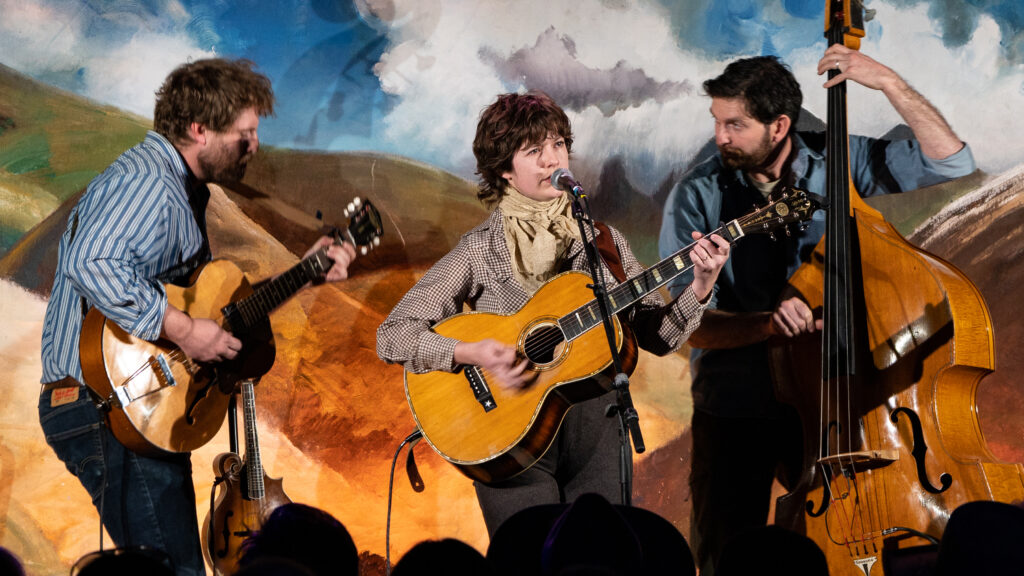
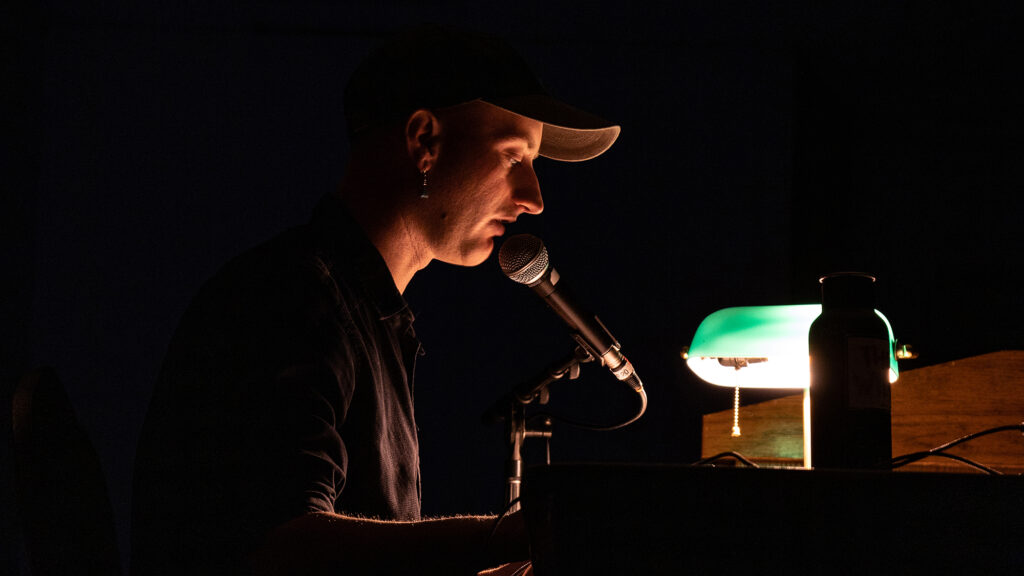
There are new poets, speakers, musicians, filmmakers, and other special guests at the Gathering each and every year, and from all over the American and Canadian West (plenty of other places in the nation, too), that mostly perform at the Elko Convention Center, or the WFC’s G Three Bar Theater, and a few other spots around Elko. There’s no bad way to experience it, so long as you go to as many sessions, and talk to as many people you can along the way. It’s a time to talk to strangers, listen to where they’re from, how the Gathering resonates with them, and experiencing the bridge from their lives to yours, the performer in front of you, and the mighty Great Basin that surrounds at once. Every single session I’ve ever been to has been great in its own way, but a few of my fave performers always include DW Groethe, Henry Real Bird, Patricia Frolander, Waddie Mitchell, Corb Lund, Matt Robertson, Dave Stamey, Fil Corbitt, Trinity Seely, Margo Cilker, and Mike Beck—I think it’s safe to say I’m Mike Beck’s biggest fan, especially with his latest tune Nevada is King.
See this year’s full schedule here.
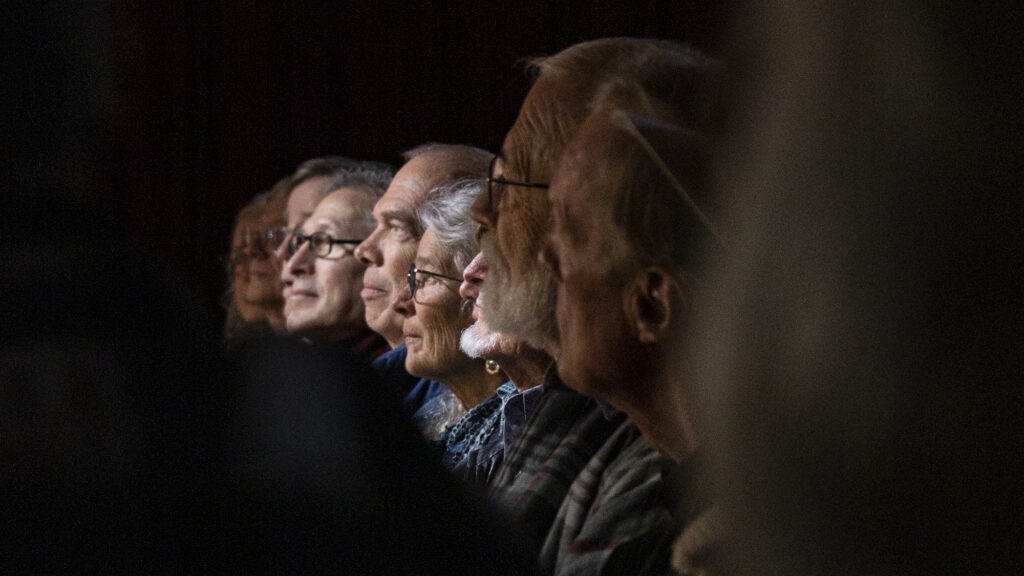
Cowboy Poetry Tickets
Of course anyone can go and be part of it all with a few different ticket options, made available on the Western Folklife Center’s site. As far as I’m convinced, I’ve never met a single person who’s gone to the Gathering and thought, “this whole heartfelt, genuine interaction thing just isn’t for me!”—it’s that pure of an experience, and that replenishing of a feeling dispensed while you’re there. You can buy tickets in person, over the phone, and by mail, but the easiest way to be part of living, breathing tradition is to become a Member of the WFC, which even for the cheapest entry level of membership promises early access to tickets (and shows that’ll otherwise sell out), free member show tickets at the event, reduced admission to all other WFC-sanctioned events the rest of the year, and a discount at the WFC gift shop, not to mention a really great e-newsletter that carries the spirit of the Gathering into the other 11 months of the year—and all for fifty bucks.

That being said, you don’t need to be a member to go to the Gathering—you can purchase single day passes, or spring for the Deluxe Pass, that gets you into non-ticketed shows and sessions (usually happening during the daytime, and the bulk of the Cowboy Poetry event.) Single day passes are $30, but with Deluxe, or three-day passes that cover the Keynote (Thursday) through the end of the Gathering (Saturday) for only $60, it’s far-and-away worth it. Then there are workshops, which usually begin at the beginning of the week and can sometimes last several days—think hat making, leather stamping, silver engraving, writers workshops led by the poets, cocktail mixology, learn to two-step, play the musical saw, and more, which depending on the subject and what you get to take home with you (like a brand new custom-made hat), range between $25 and $450 bucks.
Beyond the non-ticketed shows and sessions happening during the daytime, exclusive workshops, and many more ticketed shows happen at night and require an additional ticket—you can choose one for free with your WFC membership, or pay the thirty-or-so bucks extra to see some of the event’s biggest performers—think people like Andy Hedges, Corb Lund, and Ramblin’ Jack Elliot, to name a few.
Without getting too weepy, I have legitimate nightmares about what’ll happen when the generations who led us here—to your favorite ghost town, state park, Nevada hot spring, historic site, wilderness area, or just that wide spot in the creek where the fish are always biting—leave us. This worry has crept into my brain mostly during the late hours of the night, when I worry about what’s going to happen to the Goldfield High School if so-and-so dies, or who’s going to help write that grant that pays for raptor conservation in the Goshutes? I realize, now in my 36th year, it’s my turn. Even if it doesn’t feel like you’re qualified or earned it enough to be involved in some arbitrary, hard-to-define way, or whatever other complex you’ve got in your head that’s talking yourself out of becoming part of it, your interest in these things alone are reason enough to be involved. Because if you don’t, we simply won’t have them anymore, and I know I cannot stand by and watch that happen before me. I’m certainly no cowboy, but I do know how much this event means to me, and how much it’s now part of me, not having it in my life for the past couple years. So! Ready to swing your leg over the saddle? Become a member, and get your tickets here.
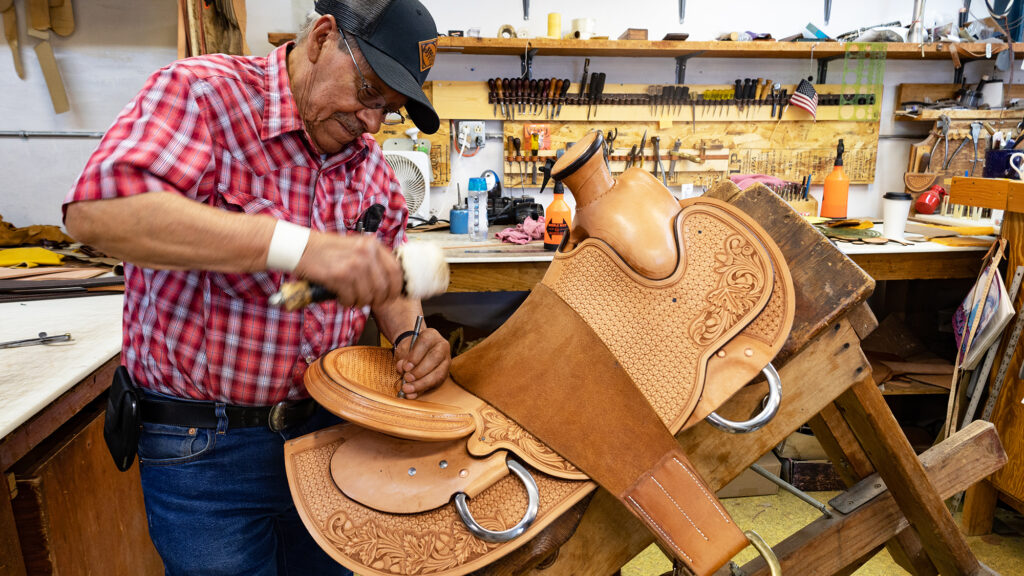
All Around Elko: Museums, Cultural Centers, and Places to Grab a Bite
Whether you’re a first-timer or an Elko expert, the Northeastern Nevada Museum is a natural place to land upon your arrival, which defines Elko’s place in the Nevada history books from its start as a stop on the Transcontinental Railroad, to Bing Crosby as Elko’s honorary mayor, to Cow Thief “Crazy Tex”, to one helluva taxidermy display, and Will E. James’ largest displayed collection, while providing a sense of place with the stories of some of the most regal ranches in the West, the grandeur of Lamoille Canyon Scenic drive and the Ruby Mountains, Jarbidge Wilderness, and beyond. Plus, there are plenty of official Gathering-sanctioned events held at the museum, which vary each year. While you’re here, be sure to browse through the Northeastern Nevada Museum gift shop, which as far as I’m concerned, is one of the best arrays of locally-made, super-high-quality arts of all kinds in Nevada borders.
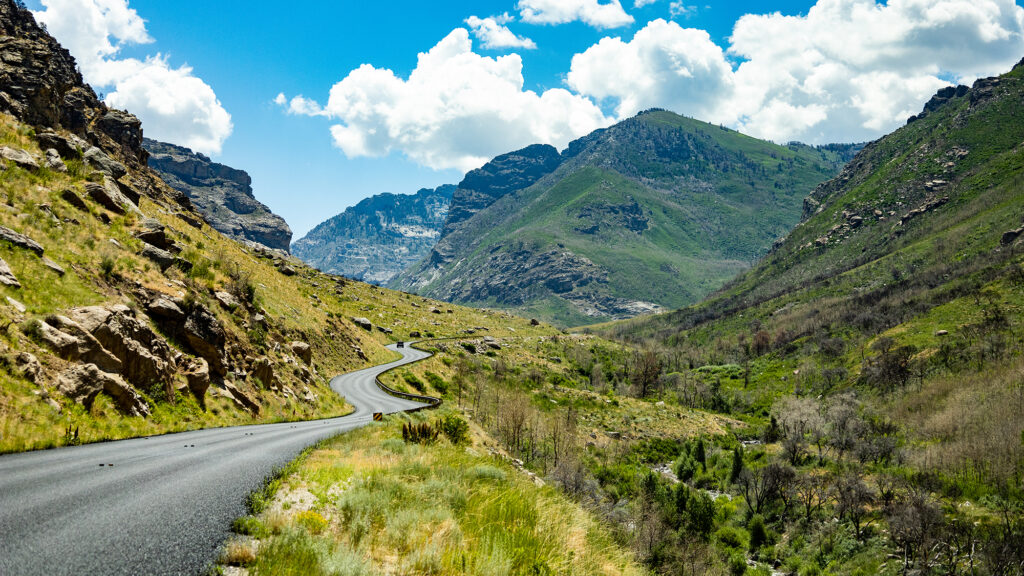
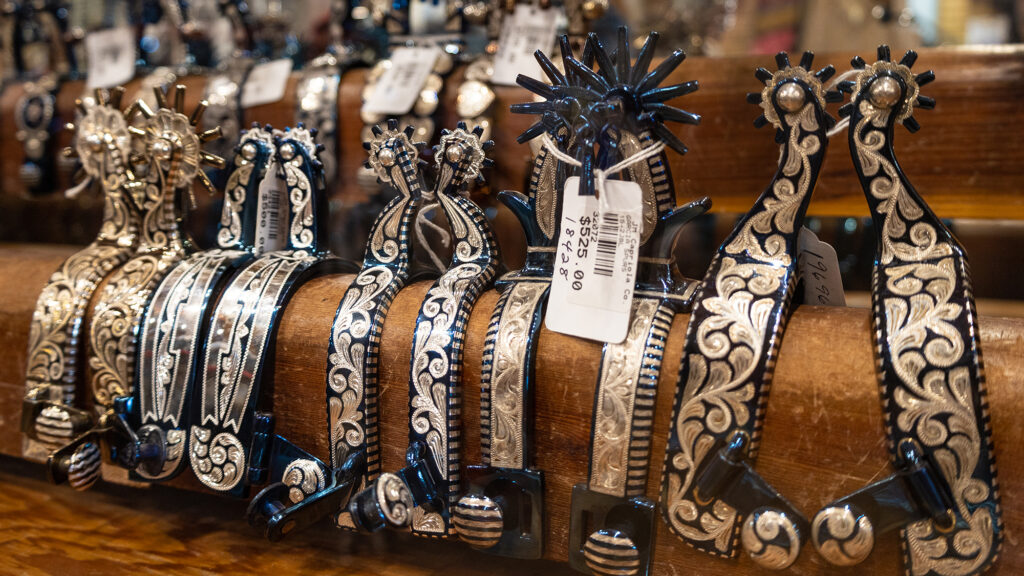
Across town, keep the Western vibes going at a place that’s outfitted everyone from John Wayne and other Hollywood elites to real working ranch hands at J.M. Capriola Co., and just a few storefronts down, the always-impressive free Cowboy Arts and Gear Museum where you can learn about G.S. Garcia and other Nevada legends responsible for the state’s oldest rodeos and other sterling legacies. In that same block, be sure to experience some of the best mixology in town at the Duncan Little Creek bar (or “the DLC” as locals may call it), where you can sip finely crafted cocktails and one of Elko’s best wine lists across a historic bar counter, or as you pursue another amazing local gallery brimming with paintings, jewelry, and more.
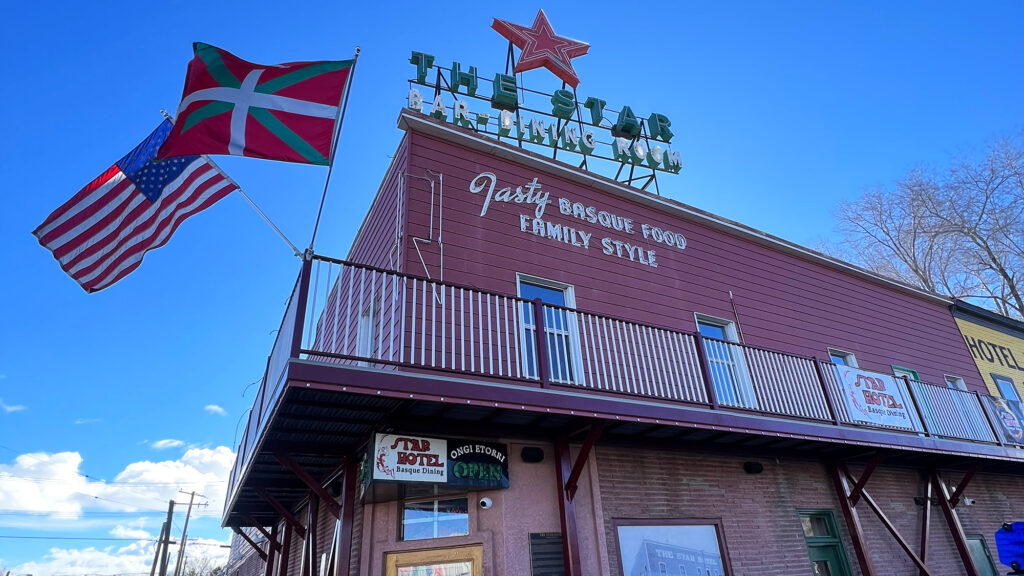
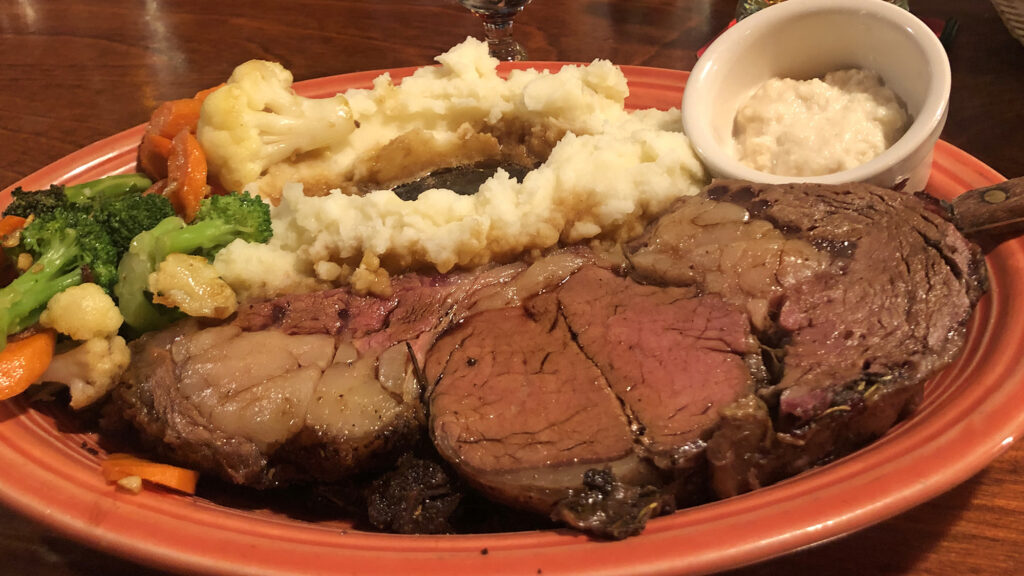
And your time in downtown Elko is of course incomplete without small-town, Western hospitality most noticeably felt at all kinds of restaurants in all corners of town. Let me put it to you this way, you can’t come to Elko and not get a garlic-loaded steak and Picon Punch—Nevada’s unofficial jet fuelified state drink—from The Star, one of the most famous Basque boardinghouses in Nevada and a true Nevada institution.
Or, get your hands on Prime Rib, always-delicious mussels, fish tacos, fresh salads, and ice-cold, endlessly flowing draft beer from Machis, which definitely has one of those menus you can’t go wrong with, no matter what you order. If you’re slightly less hungry, one of the best secrets (at least it was to me for a good, long while) is to order the cheese and salami plate with a Picon at the Star, too. And if you’re looking for a great breakfast, McAdoos is definitely one of the best breakfast spots in the state, with parmesan potatoes and blueberry pancakes served with lemon syrup I just can’t stop thinking about.
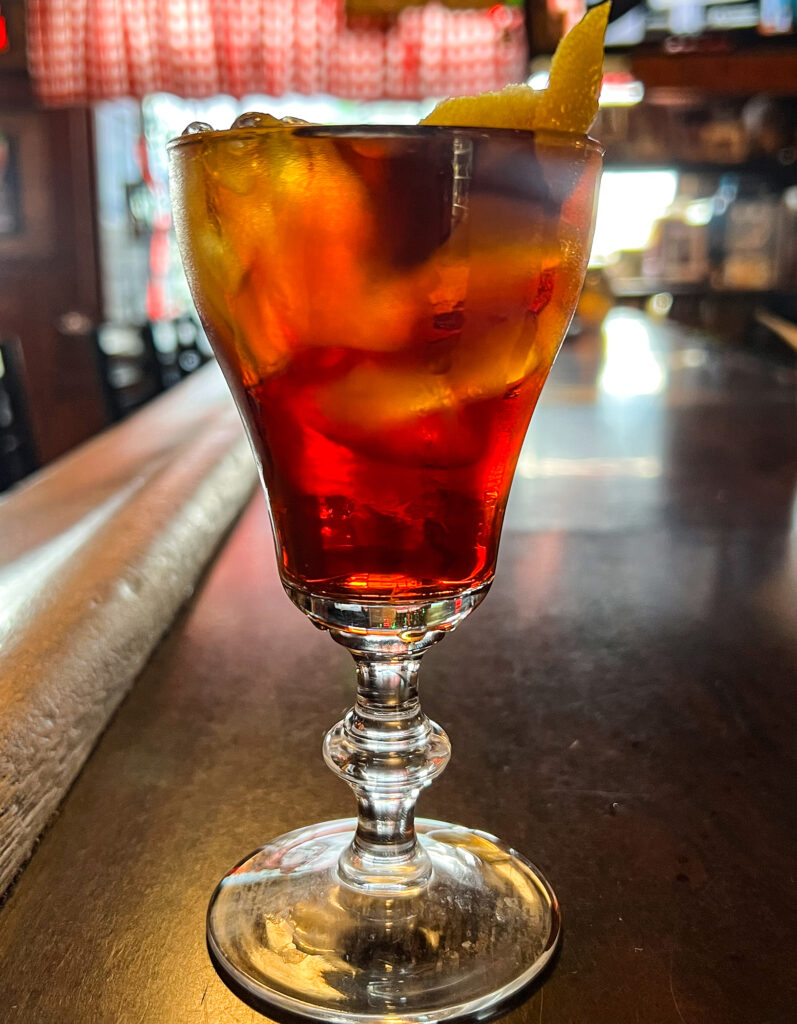
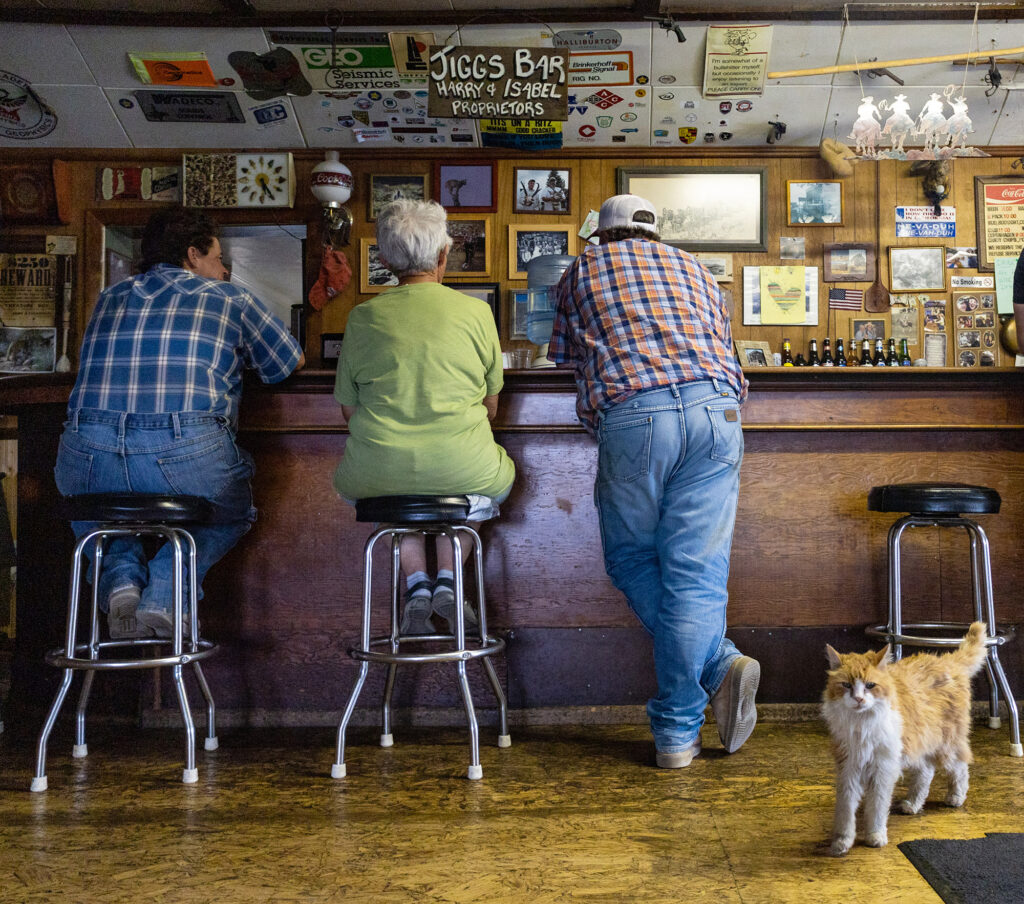
While You’re Here: The Rubies, Lamoille, Jiggs Bar, and Post-Gathering Happenings
The Gathering is reason enough to get your ass to Elko, but if you’re even remotely hardwired to see as much as you can like me, I want to feel and experience as much about a place as I can while I’m there. And when you’re in Elko, that always includes the Rubies. Hear me loud and clear when I say this—you can’t fully experience the Ruby Mountains or Lamoille Canyon in the winter months because the USFS does not maintain the 12-mile scenic drive through the canyon from November through May and the road is snowed in and inaccessible. BUT! You can load up in the truck and head the 20 minutes south of Elko to be rewarded with the most majestic mountain views, and at least 3-or-so miles into Nevada’s most breathtaking glacial-carved canyon: Lamoille Canyon.
Better yet, if you’ve hit your emotional cusp—which at the Gathering, is sometimes easy to achieve with both heartwarming and heartbreaking stories—load up and head south of Elko along Highway 228. Along the way you’re sure to see an absolutely stunning view of the Ruby Mountain range sure to stick with you before turning off toward legendary Jiggs Bar. The place has a incredible history that includes being renamed about a half dozen times, an old bandit hangout, and the site of a 1970s VW van photo shoot which selected the location because the entire population of Jiggs fit inside the van. Today, it beholds one of the best backroads bars in the state, Jiggs Bar, with plenty of friendly locals, a cash only old wooden bar counter, and the 23-year-old bar cat Tigg.

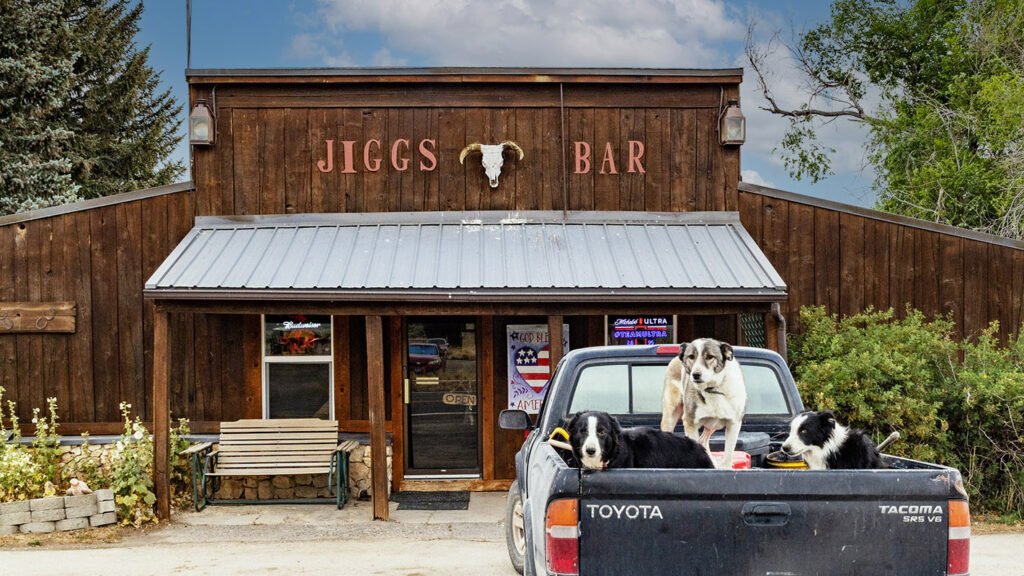
From here (drive responsibly, and) head back the way you came toward Elko, but turn off on Highway 227 toward Lamoille before you do. The detour will bring you about 3-or-so miles into Lamoille Canyon—just enough to give you a taste to return in the summer months when everything is far more accessible. Then head into the charmingly tiny town of Lamoille—which is home to Ruby Mountain Heli, or the longest-running family operated heli-skiing outfit in the country, along with the Pine Lodge Dinner House which has recently changed hands and offers even more meaty entrees served in a booth setting that makes you feel like you’re inside a Cabela’s taxidermy display… in a good way, I can promise you that. And straight from me to you: some of my best memories here involve a giant, loaded baked potato and a big ol’ glass of cabernet at the bar counter before returning to Elko for a wild night on the town.
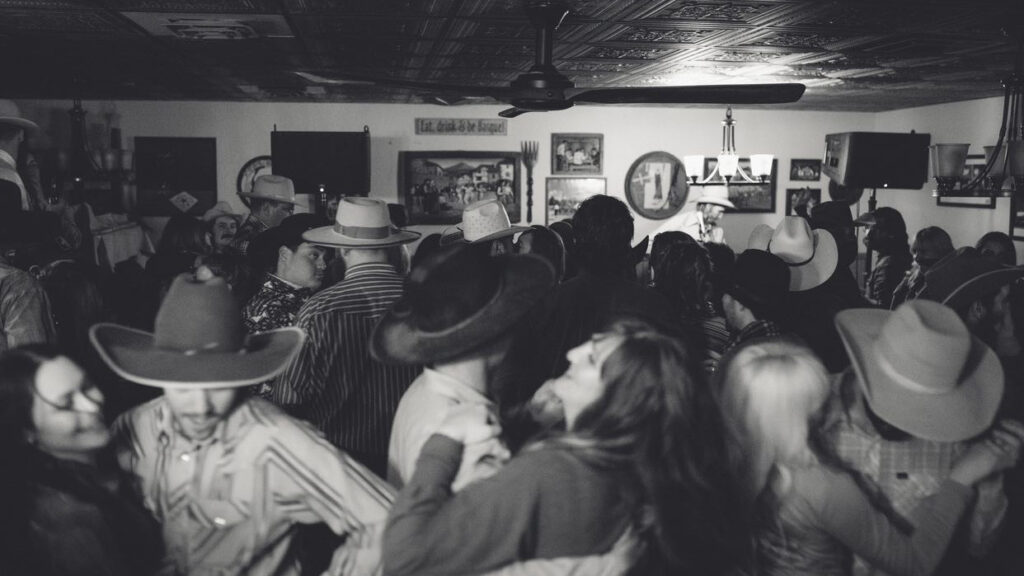
Elko nightlife the weekend of the Gathering is some of the wildest nights I’ve ever gotten into in my entire life, where staying up until 5 AM is totally routine. The Star makes it easy on you to do that, where the Picons are endlessly flowing, and live music picks up after official Gathering-sanctioned events are over for the night (usually by midnight.) The good news is some kind of live music is happening all over town, but The Star is a guaranteed bullseye for a wild time. Expect to see people like Colter Wall and Corb Lund show up and perform a totally rogue, 3 AM show—unpaid and unplanned—right in the middle of The Star’s dining room.
Elko Hotels: Where to Stay
Compared to most other rural Nevada towns, one thing Elko has plenty of is hotel rooms. In my opinion, the easiest way to experience the Gathering and all that downtown Elko has to offer at once is by picking a hotel in the old downtown area that puts you in a walkable distance between all the main activities and attractions—the Western Folklife Center, Capriola’s, Machis, The Star, and well, you get the picture. While the WFC offers a free shuttle service in the daytime in between the Western Folklife Center and the Elko Convention Center, remember this: there are no Ubers or Lyfts in Elko, and very few taxis.
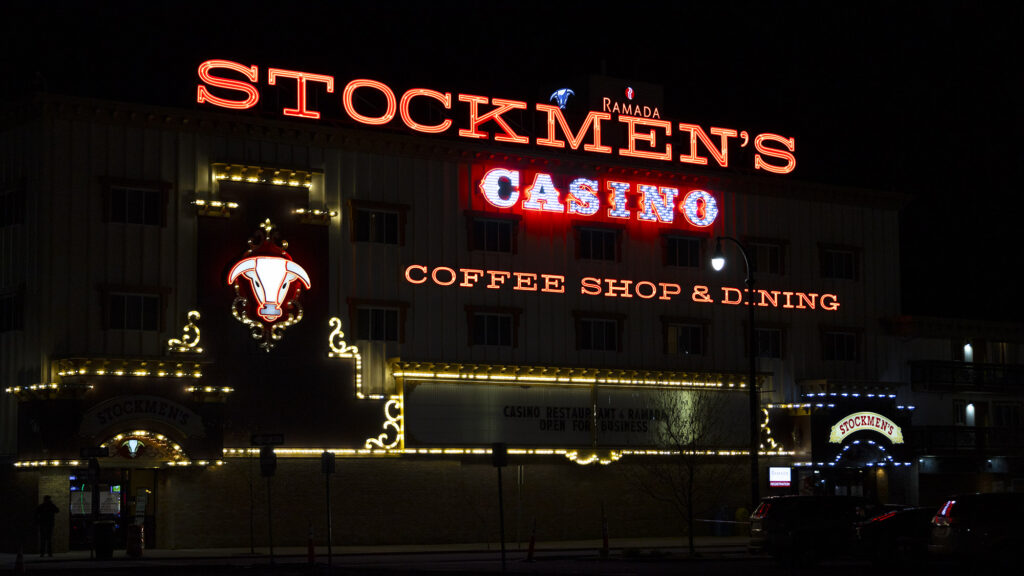
My tried and true overnight option is the Rodeway Inn, which is just a few blocks from the heart of downtown Elko. It’s not as pricey as some of the other places in town, has been recently remodeled, offers clean and safe rooms, and is within a few blocks of everything else I keep coming back to, year after year. Other great walkable options are Stockmen’s and the Thunderbird Motel, and I’ve also heard the Duncan Little Creek (DLC) offers rooms available for rent above the bar, but better call them directly to inquire about that. Other further way tried-and-true options are the Maverick Casino Hotel (formerly Elko Red Lion), and even all the way in Lamoille at the Hotel Lamoille (which is right next door to, and owned by the same folks who run the Pine Lodge Dinner House). For a full list of all the places to stay in Elko, click here. Wherever you end up for the night is sure to be a great stay, just remember—don’t ever leave your hat on the bed.

